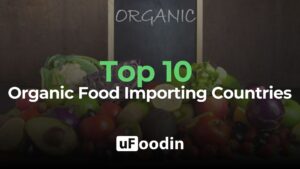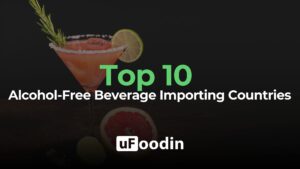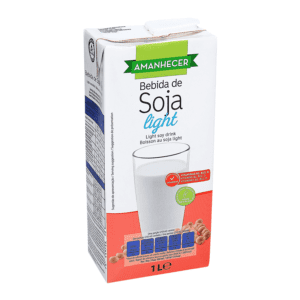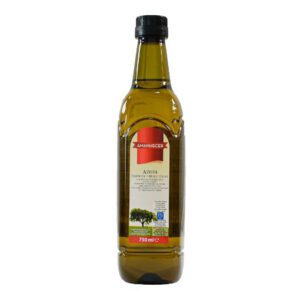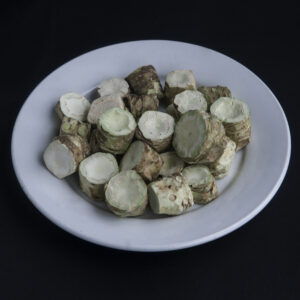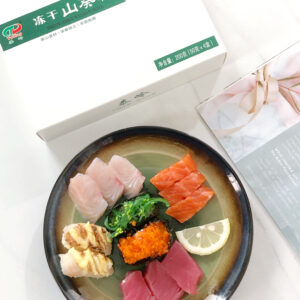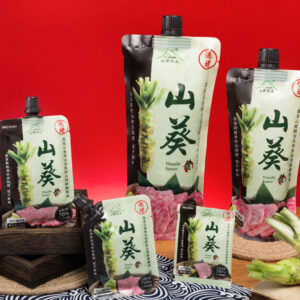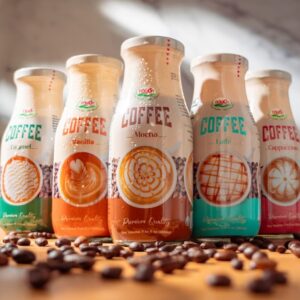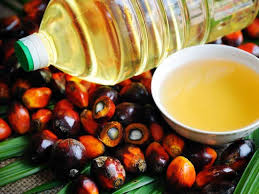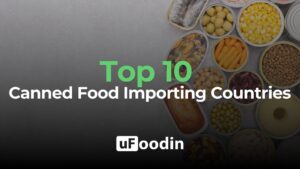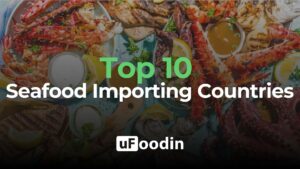
Top 10 Rice Producing Companies: Leaders in a Global Staple
Rice is a cornerstone of global food security, providing sustenance to over 3.5 billion people, or more than 50% of the global population. It is the primary source of calories in countries across Asia, Africa, and parts of Latin America. In 2023, global rice production reached approximately 510 million metric tons, with the market valued at over $302 billion. By 2030, the rice market is expected to grow at a CAGR of 3.2%, reaching $365 billion, driven by population growth, dietary preferences, and rising demand for specialty rice varieties.
Asia dominates global rice production, accounting for more than 90% of total output. Countries like China, India, and Vietnam are the largest producers, supported by favorable climates, extensive arable land, and government subsidies. At the same time, major exporters such as India, Thailand, and Vietnam are expanding their influence in global markets by focusing on high-quality and aromatic rice varieties. Beyond Asia, countries like Brazil, the United States, and Australia are carving out niches in organic, fortified, and specialty rice production to cater to premium markets.
Despite its prominence, the rice industry faces significant challenges, including climate change, water scarcity, and rising production costs. Producers are responding with innovative solutions like hybrid rice varieties, advanced irrigation systems, and blockchain-driven traceability. This article highlights the Top 10 Rice Producers, celebrating their contributions and exploring the trends shaping this vital sector.

- Riceland Foods Inc.
- Headquarters: Stuttgart, Arkansas, USA
- Why It Stands Out: Riceland Foods is one of the largest millers and marketers of rice globally, processing over 2.5 million metric tons of grain annually. As a farmer-owned cooperative, it plays a critical role in supporting agricultural communities.
- Key Innovations: Implementation of advanced water-saving irrigation techniques and diversification into rice-based products like rice bran oil.
- LT Foods Limited
- Headquarters: Gurugram, India
- Why It Stands Out: Known for its flagship brand Daawat, LT Foods is a leader in basmati rice production and exports to over 65 countries. Its focus on premium, organic, and ready-to-cook rice products sets it apart.
- Key Innovations: Investments in farm-to-fork traceability and sustainable farming practices.
- KRBL Limited
- Headquarters: Noida, India
- Why It Stands Out: KRBL is the world’s largest exporter of basmati rice, with its India Gate brand recognized globally. It has a strong presence in over 80 countries.
- Key Innovations: Development of high-yield basmati rice varieties and proprietary milling techniques for superior aroma and texture.
- SunRice (Ricegrowers Limited)
- Headquarters: Sydney, Australia
- Why It Stands Out: SunRice is a leading rice food company in the Pacific, exporting to over 50 countries. It offers a wide range of products, including fortified rice and rice snacks.
- Key Innovations: Pioneering sustainable water management and adopting renewable energy for processing facilities.
- American Rice, Inc. (Comet Rice)
- Headquarters: Houston, Texas, USA
- Why It Stands Out: A major player in the U.S. rice market, American Rice, Inc. supplies high-quality long-grain and specialty rice to domestic and international markets under the Comet Rice brand.
- Key Innovations: Advanced milling technology to ensure consistent quality and expansion into value-added rice products.
- VSR Rice
- Headquarters: Nellore, India
- Why It Stands Out: VSR Rice specializes in non-basmati varieties and caters to emerging markets in Asia and Africa. It is a significant exporter, focusing on quality and affordability.
- Key Innovations: Modernized processing facilities and adoption of eco-friendly farming practices.
- REI Agro Limited
- Headquarters: Kolkata, India
- Why It Stands Out: A key producer and exporter of premium basmati rice, REI Agro has built a reputation for quality and innovation in processing techniques.
- Key Innovations: Proprietary aroma-enhancing processing methods and strong focus on premium packaging.
- Asia Golden Rice Co., Ltd.
- Headquarters: Bangkok, Thailand
- Why It Stands Out: Asia Golden Rice is one of Thailand’s largest exporters, specializing in jasmine and high-quality white rice.
- Key Innovations: State-of-the-art milling technology and sustainable farming initiatives to enhance yield and quality.
- Capital Rice Group
- Headquarters: Bangkok, Thailand
- Why It Stands Out: Capital Rice Group is a major exporter of Thai rice, known for its reliability and high standards in global markets.
- Key Innovations: Integration of blockchain for traceability and eco-friendly packaging solutions.
- Amira Nature Foods Ltd.
- Headquarters: Dubai, UAE
- Why It Stands Out: Amira Nature Foods focuses on premium basmati rice and has a strong presence in the Middle East, North America, and Europe.
- Key Innovations: Expansion into organic rice farming and introduction of ready-to-eat rice meals to diversify its portfolio.
Major Trends in the Rice Industry
- Increasing Demand for Specialty Rice
The global appetite for premium rice varieties like basmati and jasmine continues to grow, fueled by their aromatic qualities and versatility in global cuisines. Specialty rice accounted for over 25% of global rice exports in 2022, with demand particularly strong in Europe, North America, and the Middle East.
- Shift Toward Sustainable Practices
Sustainability is becoming central to rice production as consumers and regulators push for eco-friendly farming. Techniques like alternate wetting and drying (AWD), direct seeding, and regenerative agriculture are being adopted to reduce water usage and greenhouse gas emissions.
- Expansion of Organic and Non-GMO Rice
The organic rice segment is growing at a CAGR of 7.5%, driven by health-conscious consumers seeking pesticide-free and minimally processed options. Markets in the United States, Europe, and Japan are leading this trend.
- Technological Integration
Innovations like precision farming, drone technology, and AI-driven analytics are optimizing yields, minimizing input wastage, and improving overall efficiency. Blockchain is also being used to enhance supply chain transparency and provide consumers with detailed product traceability.
- Convenience Products and Value-Added Rice
Ready-to-cook and pre-packaged rice products are gaining traction, especially among urban populations. Value-added products, such as fortified rice, are addressing nutritional deficiencies in developing regions.

Main Challenges in the Rice Industry
- Water Scarcity
Rice is one of the most water-intensive crops, requiring an average of 2,500 liters of water to produce just 1 kilogram. Regions facing water shortages, such as South Asia and parts of Africa, struggle to maintain production levels. Efforts to mitigate this challenge include implementing water-saving irrigation techniques like drip irrigation and AWD, but adoption remains uneven.
- Climate Change
Unpredictable weather patterns, rising temperatures, and extreme events like droughts and floods are disrupting rice farming. Coastal areas in countries like Bangladesh and Vietnam are increasingly vulnerable to salinity intrusion, which compromises crop yields.
- Declining Arable Land
Urbanization and industrial expansion are shrinking the availability of agricultural land in major rice-producing countries. Producers are being forced to optimize output on smaller plots, relying on high-yield varieties and advanced farming techniques.
- Rising Input Costs
The costs of fertilizers, labor, and energy are rising globally, placing pressure on profit margins. Smallholder farmers, who produce over 70% of the world’s rice, are particularly vulnerable to these financial constraints.
- Geopolitical and Trade Barriers
Export restrictions, tariffs, and political tensions can disrupt global rice trade. For instance, India’s export restrictions in 2023 created supply chain bottlenecks and increased global rice prices by 15%. Such volatility impacts both producers and consumers.
- Pest and Disease Management
The rice industry faces persistent challenges from pests like the brown planthopper and diseases such as bacterial leaf blight. Changing climates exacerbate these risks, requiring continuous investment in research and resilient crop varieties.
The Top 10 Rice Producers are vital players in a global industry that feeds billions. From India’s fragrant basmati to Thailand’s premium jasmine rice, these producers demonstrate the importance of balancing tradition with innovation to meet evolving demands. As challenges like water scarcity and climate change intensify, the role of sustainability and technology becomes even more critical.
Platforms like uFoodin are instrumental in driving collaboration across the rice value chain. By connecting producers with buyers, exporters, and foodservice operators, uFoodin facilitates access to new markets, streamlines supply chains, and promotes the exchange of innovative ideas. For example, rice producers can leverage uFoodin’s platform to showcase organic and specialty products or collaborate on sustainability initiatives with international partners.
The future of the rice industry will depend on its ability to adapt, innovate, and address global challenges while continuing to nourish millions worldwide. As these producers rise to the occasion, they set the stage for a more resilient and sustainable food system.
uFoodin Editorial Team
Bibliography
- Statista: Global Rice Market Overview
- FAO (Food and Agriculture Organization): Rice Production and Sustainability Trends
- World Bank: Agricultural and Water Challenges in Asia
- Fortune Business Insights: Rice Industry Forecasts and Challenges
- Company Reports: LT Foods, KRBL Limited, Riceland Foods, and SunRice

